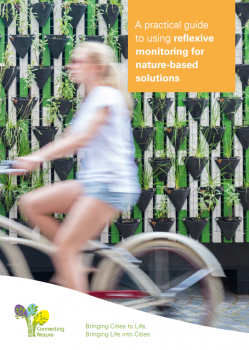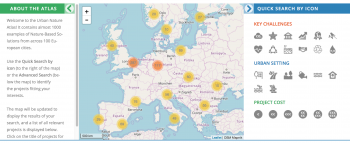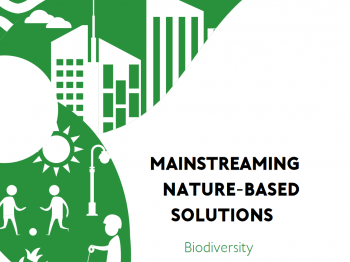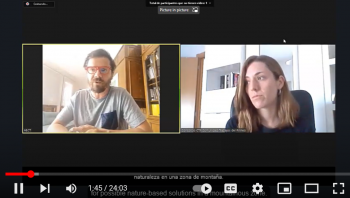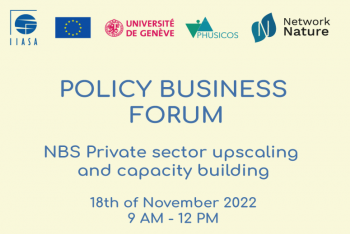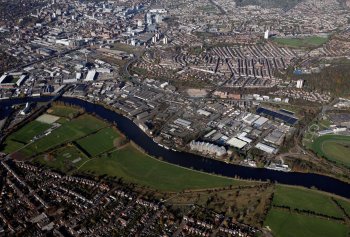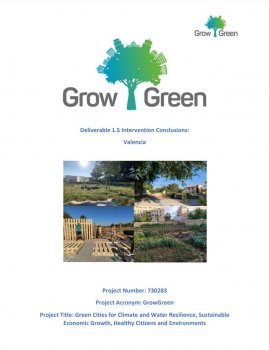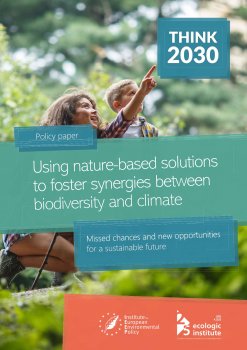Marketplace
A practical guide to using reflexive monitoring for nature-based solutions (+ready-to-use materials)
Throughout the Connecting Nature guidebook 'A practical guide to using reflexive monitoring for nature-based Solutions', at the end of every chapter, a list of ready-to-use materials is supplied. These materials include exercise templates, presentations or question lists, in PowerPoint,
Guiding Principles for Co-learning - Framework
This practical framework introduces five principles for co-learning within international transdisciplinary (TD) research for sustainable development in cities: (i) Mutual learning (ii) Context-based learning (local knowledge) (iii) Citizen involvement/ownership (iv) Gender equality (v)
Urban Nature Atlas
The Urban Nature Atlas was developed in 2017 as an output of the Naturvation project (NATure-based URban innoVATION, a Horizon 2020 research project). The Atlas sought to collect evidence on nature-based solutions in order to provide a basis for the analysis of socio-economic and innovation
Nature4Cities - Assessment tools for NbS projects
To minimise the difficulties often,met by municipalities when choosing indicators, support can come from the development of new tools linked to NbS. For example, Nature4Cities aims to provide access to a simplified online urban NbS assessment tool, where it is possible to create and assess urban
- Guidance
MAINSTREAMING NATURE-BASED SOLUTIONS Biodiversity
This report specifically addresses the mainstreaming of nature-based solutions for biodiversity. Nature-based solutions are increasingly integrated in urban development practices. They have the potential to effectively address biodiversity challenges through conserving nature, restoring nature, and
PHUSICOS : Santa Elena and Artouste
Presentación del estudio de caso PHUSICOS: Santa Elena y Artouste / Présentation de l'étude de cas PHUSICOS : Santa Elena et Artouste
Conserving Nature in a time of crisis: Protected Areas and COVID-19
Many of the threats facing biodiversity and protected areas will be exacerbated during, and following, the Covid-19 outbreak. The health of humans, animals and ecosystems are interconnected. An expanding agricultural frontier and human incursions into natural areas for logging, mining and other
NbS Private sector upscaling and capacity building - PBF Workshop Summary 18 November 2022
The Policy Business Forum (PBF) consists of Nature-based Solutions (NbS) experts and knowledgeable stakeholders at the international, European, and national scale. The main aim of the PBF is to explore innovative ways to strengthen the science-policy-business nexus in order to exploit opportunities
Urban Nature-based Solutions
This publication by WWF and Ecoact aims to share the important role of cities adopting nature targets to help restore the relationship between human and the natural world to realize the promise of the UN Sustainable Development Goals for a net-zero world. In this document eight successful nature-
- Document
Enhancing Additionality Assessment of Carbon Credit of Various Interventions by Utilizing Site-Specific Historical Data in Compliance with IPCC International Standards
In carbon credit additionality projects, precise quantification methods are crucial to prevent incorrect estimations. The project activities and results demonstrated that active forest management generates additionality and, consequently, carbon credits.
Community Geotimeline
Online tool for harnessing and assessing community capital and resilience.
Ecological Restoration – a means of conserving biodiversity and sustaining livelihoods
Many of the world’s ecosystems have undergone significant degradation with negative impacts on biological diversity and peoples’ livelihoods. There is now a growing realisation that we will not be able to conserve the earth’s biological diversity through the protection of critical areas alone. This
A practical guide to using reflexive monitoring for nature-based solutions
Reflexive monitoring is a method developed to monitor and evaluate transformative solutions. It is based on transition theory and helps you to navigate the complex and unpredictable nature of non-linear and multi- actor processes. It will prove very useful for the implementation of large-scale
Business Ecosystems Training
Business Ecosystems Training (BET) course is a freely-available capacity building program to increase the knowledge and understanding of the links between ecosystems and business. The objective of BET course is to equip companies with the skills they need to better manage their impacts and
- Document
Good practices in Do.Na.To Project communication and technical formation
Effective communication was key in managing Douglas fir forests in Tuscany, with various project partners sharing insights through various platforms and organizing tours and conferences to promote knowledge exchange.
GrowGreen Report: Intervention Conclusions: Valencia
Within the EU-funded GrowGreen project, this report presents the challenges and results from the work in Valencia, focused on Benicalap, an area located in the north west of the city, chosen for the need for regeneration and investment. The aim of this report is to demonstrate how NbS can help
Using nature based solutions to foster synergies between biodiversity and climate: Missed chances and new opportunities for a sustainable future
This paper assesses how EU policies and investments have spurred the uptake of nature-based solutions to support biodiversity and ecosystem health. It outlines remaining gaps and opportunities on how to best scale up efforts to meet the current EU policy framework’s 2030 objectives. It provides
Taking Action for Urban Nature - Citizen Engagement
Diverse values, interests and needs are associated with nature-based solutions. It is therefore important that they are taken into account in decision-making. As engaging communities contribute to realising all the sustainability benefits of nature-based solutions the "Citizen Engagement
New Nature Economy Report IIThe Future Of Nature And Business
Nature is declining at an unprecedented rate, with nearly 1 million species at risk of extinction because of human activity. Earth system scientists have warned that the Amazon rainforest, the world’s coral reefs and the boreal forest biomes are all fast approaching the cusp of irreversible tipping
- ‹ previous
- 42 of 55
- next ›

